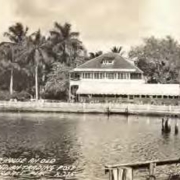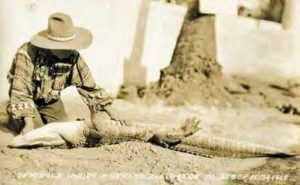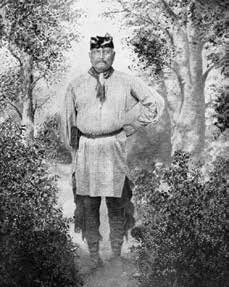TINA OSCEOLA Chickee Talk
A CHANGING FLORIDA
Co-Written by Tina Osceola and David Scheidecker, the Tribal Historian, Seminole Tribe of Florida
The Seminole who remained in Florida had been prepared for survival in the harsh wetlands environment by nearly five decades of wartime life. The declaration by the United States that the war was over did not mean much to the Native people, who had heard such statements before. The Seminole remained on guard and cautious, making their homes and camps in places hidden from the expanding American settlements.
Ties with Americans were never completely severed, however, and trade was kept with select Americans who had earned trust. When the United States broke into Civil War, Sam Jones learned of it, and even at one point met with a representative of the Confederate Florida government. Throughout the next few decades the Seminole maintained their wariness, with only a few interacting with Floridians to buy and sell goods, and to learn the news from the outside world.
During this time the Tribe began to divide. The majority remained in the south, in the Everglades and Big Cypress Swamps. They were primarily the descendants of the Miccosukee, Calusa, Apalachee, and other Florida people. These families spoke Miccosukee and were led by Abiaka (Sam Jones). The Red-Stick Creek and their families, who had come into Florida after the Creek Civil War, spoke the Muscogee language and preferred the more central lands east of Lake Okeechobee.
The Seminole people watched as Americans expanded further in Florida. Trade became more regular, with Florida commodities such as alligator hides, deer skins, and bird plumage grew popular in the northern United States. Trading posts were established with friends of the Tribe, such as Frank Stranahan in Ft. Lauderdale, and William Brown in Big Cypress. One trading post established by the Seminole east of Lake Okeechobee grew to become the community of Indiantown.
One Cow Creek leader, Thlocko Tustenuggee (Captain Tom Tiger), began to visit the American towns regularly, becoming a popular figure. When one settler stole Tom Tiger’s horse, he became the first Native person in Florida to take an American to court. While he lost the case, the support he got spread into the organization known as the Friends of the Seminole. Tom Tiger would later open the first Seminole tourist camp near Miami, boosting a new enterprise for the Tribe.
New sources of income were needed as well. While the hunting trade had brought wealth into the Tribe, it also attracted more settlers looking to compete. Soon American hunters not only outnumbered the Seminole, but the toll on the animals from over-hunting brought them to the brink of extinction. Expanding land plans in Florida also called for draining the wetlands. For the Tribe this meant not only losing the canoe routes they relied on for transportation, but their isolation as canals and roads cut through their lands. During the Florida land boom developers bought wide swaths of land from the state, much of which was home to Seminole camps. Tribal members began to take what jobs could be found in the new economy, often working as farmhands or laborers.
Faced with growing threats to their way of life Tribal leaders began working with the Friends of the Seminole to find a solution. A petition to the federal government started the process for land to be brought into trust for the Tribe. By 1938 three reservations had been established, covering over 80,000 acres, near Dania, Okeechobee, and Big Cypress. Old lessons of government deals were not forgotten, however, and many Tribal members were wary of moving to these lands.
FEATURED IMAGE: Real Photo Postcard of Stranahan House, 1947, Courtesy Ah-Tah-Thi-Ki Museum







Leave a Reply
Want to join the discussion?Feel free to contribute!